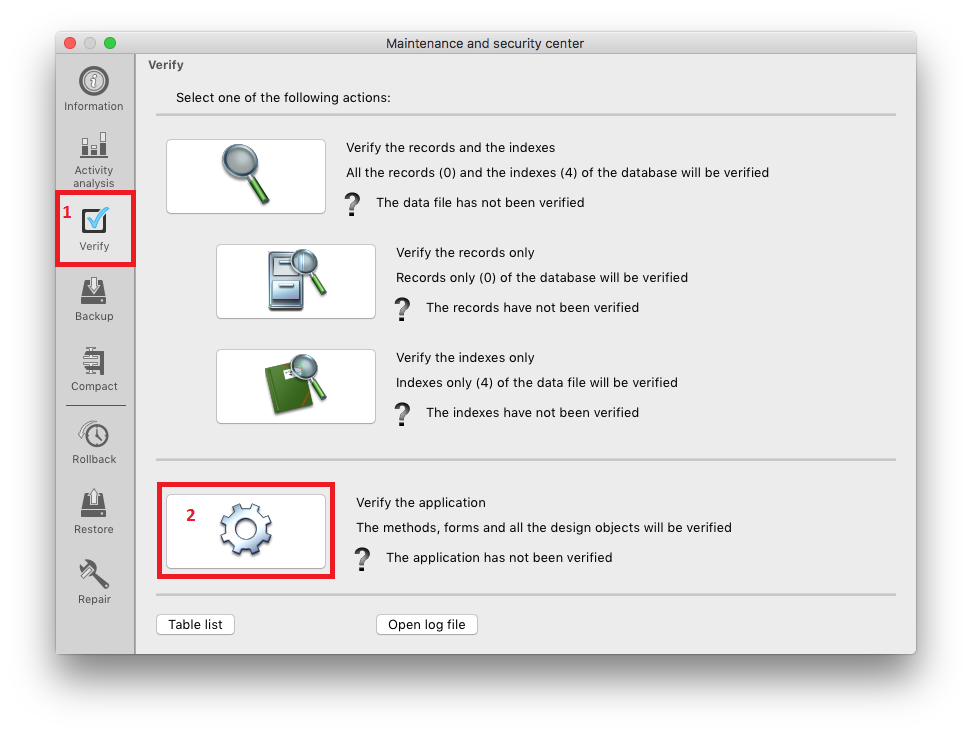You are looking forward to start coding with Object Notation? For sure, Object Notation will make your life easier as a developer. But before activating it in your existing application, you should make sure that your code is ready.
The new Object Notation syntax introduces some restraints as 4D language now considers the three following characters as reserved symbols: “ . ”, “ [ ” and “ ] ” (i.e. dot, opening and closing brackets).
As a consequence, once you have activated the Object Notation in your database, it is no longer allowed to use these symbols in variable names, method names, table names, or field names. And of course it is the same for your existing code!
So it is important to check that your application does not contain these symbols before activating this feature. But don’t worry the MSC can do it for you!
Check your application with the MSC
Open the MSC and click the “Verify the application” button to start the verification:

Check Results in Log file
If the result of the verification is “The application is valid”, no problem, you can safely activate the Object Notation.
If the result of the verification is “Anomalies have been detected”, click on the “Open log file” button and look at the details of the warnings:


If the log file contains at least one warning message indicating that a name contains dots or brackets (e.g. “The method name “my.method” contains dots or square brackets”), your application is not compliant with Object Notation.
In that case, you need to rename each listed element that contains “.”, “[“, or “]”. You can do it manually using the warning list generated by the MSC, or automatically thanks to the “Find in design” standard 4D feature.
Then, you are ready to activate the Object Notation and enjoy this powerful syntax!
You can also refer to the documentation for more information on Object Notation

